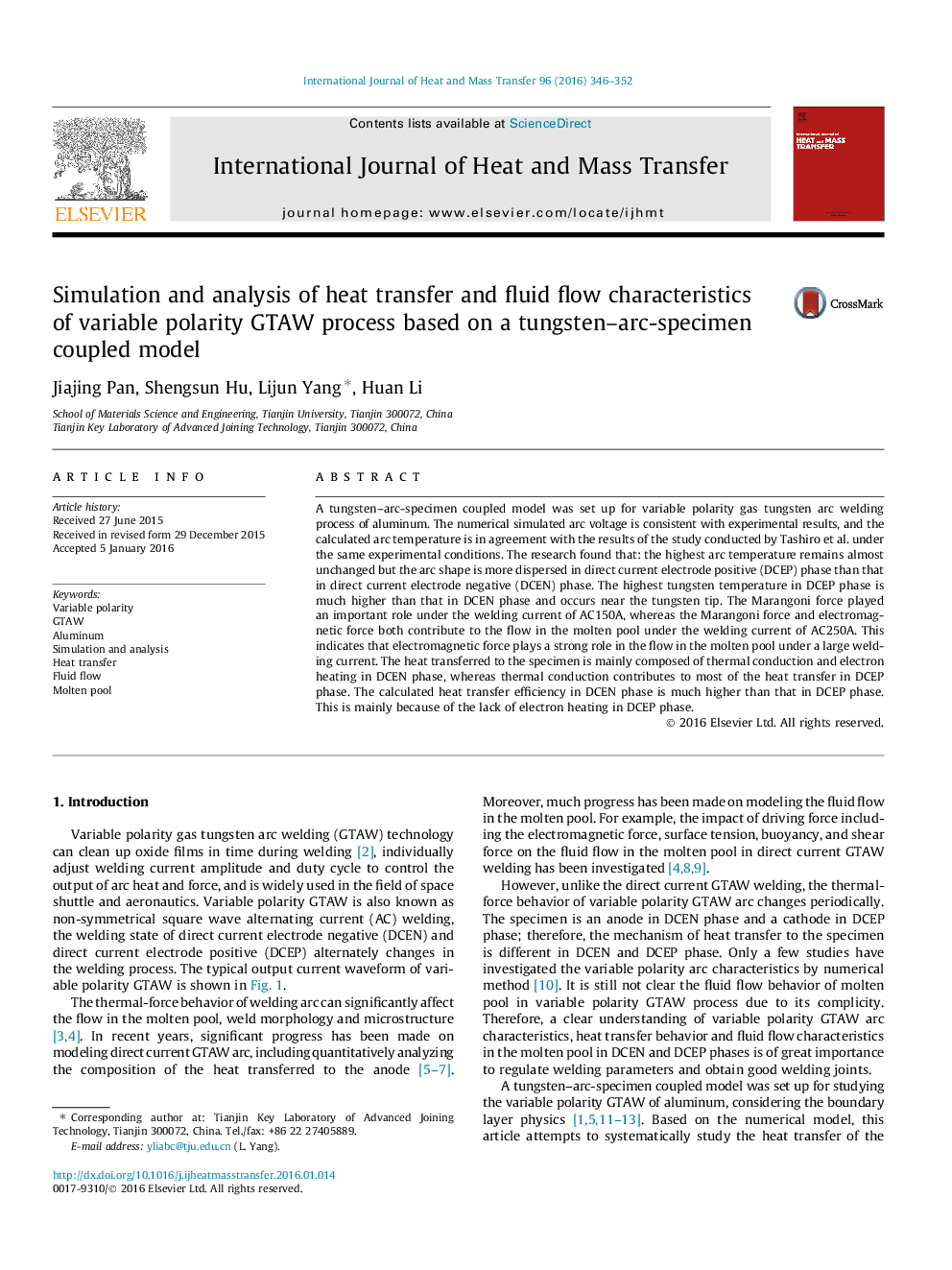| Article ID | Journal | Published Year | Pages | File Type |
|---|---|---|---|---|
| 7055851 | International Journal of Heat and Mass Transfer | 2016 | 7 Pages |
Abstract
A tungsten-arc-specimen coupled model was set up for variable polarity gas tungsten arc welding process of aluminum. The numerical simulated arc voltage is consistent with experimental results, and the calculated arc temperature is in agreement with the results of the study conducted by Tashiro et al. under the same experimental conditions. The research found that: the highest arc temperature remains almost unchanged but the arc shape is more dispersed in direct current electrode positive (DCEP) phase than that in direct current electrode negative (DCEN) phase. The highest tungsten temperature in DCEP phase is much higher than that in DCEN phase and occurs near the tungsten tip. The Marangoni force played an important role under the welding current of AC150A, whereas the Marangoni force and electromagnetic force both contribute to the flow in the molten pool under the welding current of AC250A. This indicates that electromagnetic force plays a strong role in the flow in the molten pool under a large welding current. The heat transferred to the specimen is mainly composed of thermal conduction and electron heating in DCEN phase, whereas thermal conduction contributes to most of the heat transfer in DCEP phase. The calculated heat transfer efficiency in DCEN phase is much higher than that in DCEP phase. This is mainly because of the lack of electron heating in DCEP phase.
Related Topics
Physical Sciences and Engineering
Chemical Engineering
Fluid Flow and Transfer Processes
Authors
Jiajing Pan, Shengsun Hu, Lijun Yang, Huan Li,
